#Cantinière
Text

Unique print showing one of the female followers of Napoleon’s army, c. 1807-1814, Aaron Martinet
The women is a Cantinière, which is a seller of brandy which accompanies the army. The title of the print calls her Mme. d'Eau-de-vie suivant l’Armée, which translates to Madame Brandy following the army.
According to Guy C. Dempsey (from Napoleon’s Army):
“The woman’s dress is exceedingly sensible and modest, with a hint of colour suggesting both a scarf at her throat and a kerchief around her head. The dog presumably belongs to her.”
This print is also unique as it shows the back of a Guard Grenadier’s uniform.
#my pics#Napoleon's Army: 1807-1814 as Depicted in the Prints of Aaron Martinet By Guy C. Dempsey Jr.#Aaron Martinet#napoleonic era#napoleonic#napoleon#napoleon bonaparte#print#first french empire#french empire#19th century#female soldiers#Guy C. Dempsey#Cantinière#history#military history#prints#women’s history#women#womens history#france#cloak#top hat#fashion history#Grenadier#imperial guard#1800s#history of fashion#19th century fashion
99 notes
·
View notes
Text
The dangers of the combat zone

"Women accompanying the military were in what military historian John Lynn calls the combat zone, which is
best defined by the intensity and immediacy of danger and by the ability to do direct harm to the enemy… the full reality of war lives here. Modern armies regard it as an innovation to send some women into combat, but in the campaign community all women stood in harm’s way.
It would be odd to imagine that the women accompanying an army, exposed as they were to all the dangers of the military world, didn’t pick up arms and fight. In 1643, in the earlier stages of the English Civil War, a regiment of troops was recalled from Ireland to support King Charles. Rumours swirled that they were accompanied by a regiment of women, and that ‘these were weaponed too; and when these degenerate into cruelty, there are none more bloody’. Indeed, when 120 Irish women were taken prisoner at Nantwich they were discovered to have long knives with them, causing a furore in the press. The dubiously named True Informer excitedly reported that the knives in question were half a yard long, with a hook at the end ‘made not only to stab but to tear the flesh from the very bones’. The likeliest explanation for these knives, however, is that the women weren’t soldiers; they were camp followers, and they needed the knives to help them with pillage and self-defence.
The women of the campaign community did fight. The Bishop of Albi, on the battlefield of Leucate in southern France to administer to the dying in 1637, came upon the bodies of several women in uniform. ‘These were the real men,’ he was told by the Castilian soldiers, ‘since those who had fled, including certain officers, had conducted themselves like women’.
Madeleine Kintelberger was a vivandière accompanying the French Seventh Hussar Regiment at Austerlitz in 1805, along with her soldier husband and their six children. The regiment was under heavy attack from Russian forces when her husband was killed by a cannonball, and her children seriously wounded. Madeleine herself had taken a cannonball to the arm, virtually slicing it off below the shoulder. As the Russian Cossacks approached, she scooped up a sword to defend her children, receiving further wounds in both her arms before the family was taken prisoner. Madeleine was six months pregnant and gave birth in captivity. Her bravery was rewarded with a pension from Napoleon. Examples of cantinières fighting are ‘legion’."
Forgotten Warriors, Sarah Percy
#history#women in history#women's history#19th century#17th century#women warriors#warrior women#madeleine kintelberg#european history#historical figures#historical#france#franch history#england#english civil war#napoleoni
54 notes
·
View notes
Photo
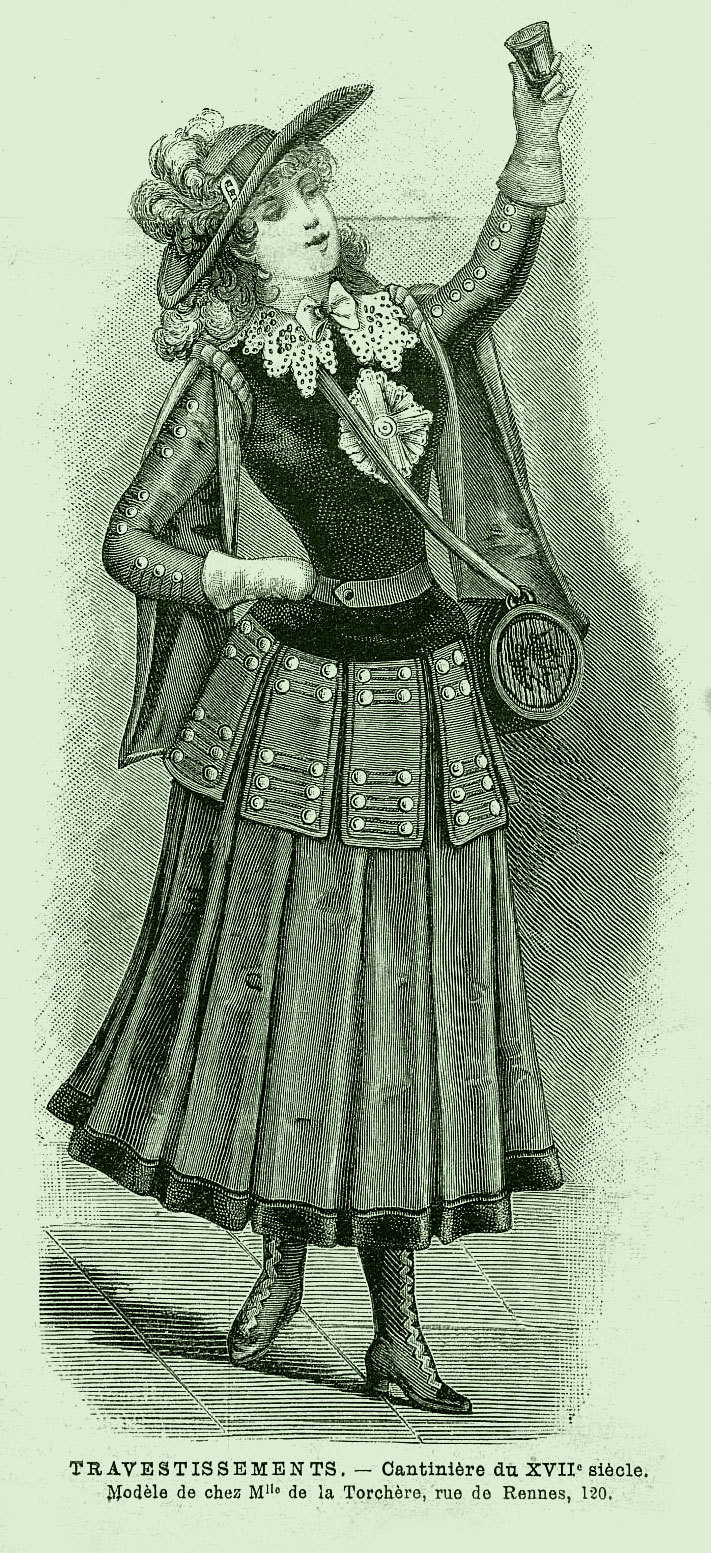
La Mode illustrée, no. 2, 13 janvier 1889, Paris. Travestissements. — Cantinière du XVIIe siècle. Modèle de chez Mlle de la Torchère, rue de Rennes, 120. Ville de Paris / Bibliothèque Forney
La jupe, courte, faite en soie rouge, est recouverte d'un volant en satin rouge orné au bord inférieur de rubans de velours noir et disposé au bord supérieur en plis creux ayant environ 10 centimètres de largeur. On pose sur ce volant des pattes en satin pris double, ayant 12 mètres de largeur, 30 centimètres de longueur, garnies de bouclettes en cordonnet de soie rouge. Le corsage à basque, fait en velours noir, lacé derrière, est orné à l'encolure avec un col de dentelle, garni d'un nœud de dentelle. Les entournures sont garnies de rouleaux do satin. Les manches dolman, ouvertes, faites en satin rouge, sont doublées de soie jaune. Ceinture en cuir de nuance claire. Grand chapeau de feutre noir garni de plumes rouges. Bottes en cuir noir. Le petit tonnelet est retenu par une courroie en cuir.
The skirt, short, made of red silk, is covered with a red satin flounce adorned at the lower edge with black velvet ribbons and placed at the upper edge in box pleats about 10 centimeters wide. On this ruffle are placed double satin tabs, 12 meters wide, 30 centimeters long, trimmed with loops of red silk cord. The basque bodice, made of black velvet, laced behind, is adorned at the neckline with a lace collar, trimmed with a lace bow. The armholes are lined with rolls of satin. The open dolman sleeves, made of red satin, are lined with yellow silk. Light shade leather belt. Large black felt hat trimmed with red feathers. Black leather boots. The small keg is held by a leather strap.
#La Mode illustrée#19th century#1800s#1880s#1889#periodical#fashion#fashion plate#retouch#description#canteen#17th century#Forney#dress#costume#masquerade#Modèles de chez#Mademoiselle de la Torchère
69 notes
·
View notes
Text
Leon Dupin, Chicorée la Cantinière, 1933

2 notes
·
View notes
Text

Cantinière of the Francs-tireurs irregular military formations in Châteaudun, Beauce region of France
French vintage postcard
#old#postcard#postkaart#chteaudun#french#vintage#beauce#briefkaart#postal#irregular#region#ansichtskarte#cantinire#ephemera#châteaudun#photography#photo#francs#postkarte#tarjeta#france#military#formations#historic#sepia#tireurs#carte postale
2 notes
·
View notes
Text
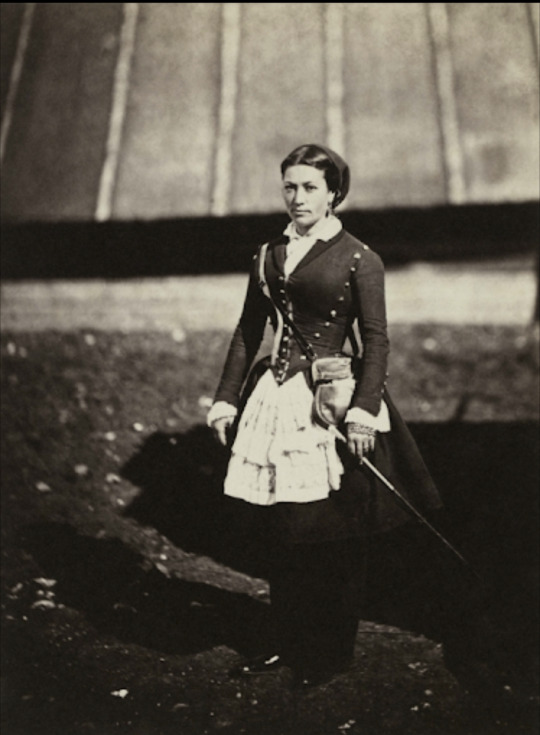
Vivandière by Roger Fenton, May 5 1855
"Photograph of a Vivandière attached to a Zouave regiment standing facing slightly left. She is wearing a tight fitting jacket and a skirt and apron with trousers underneath. There is a bag across her body and she is holding a stick in her left hand. There is a building behind her. Vivandières, also known as a Cantinières, were women who travelled with the French army as canteen workers. They often wore a female version of the uniform of the regiment they were attached to."
- Source: Royal Collection Trust
7 notes
·
View notes
Text
youtube
Mdr en 2008 qqs mois après mon incroyable découverte de Mylène Farmer j’avais demandé à mon père de payer 99 centimes pour acheter ce clip afin que je l’ai sur mon iPod 😭😭😭💀💀💀💀💀💀💀💀 (also neveur forguette quand qqs temps auparavant j’étais tombé sur sans contrefaçon, avait pété mon casque et était retourné au collège avec une potite boule de cheveux courts la semaine d’après, I made even less friends but was very happy about les cantinières m’appelant jeune homme. Bref K.o la dernière fois en rentrant des courses je l’écoutais and my dramatic ass started CRYING 🤣!!!)
4 notes
·
View notes
Text
FILOMENA VALENZUELA GOYENECHEA // SOLDIER
“She was a Chilean soldier, known as La Madrecita. Originally a cantinière, she came to participate directly in combat in the Battle of Pisagua, Battle of Dolores and Battle of Los Ángeles during the War of the Pacific.”

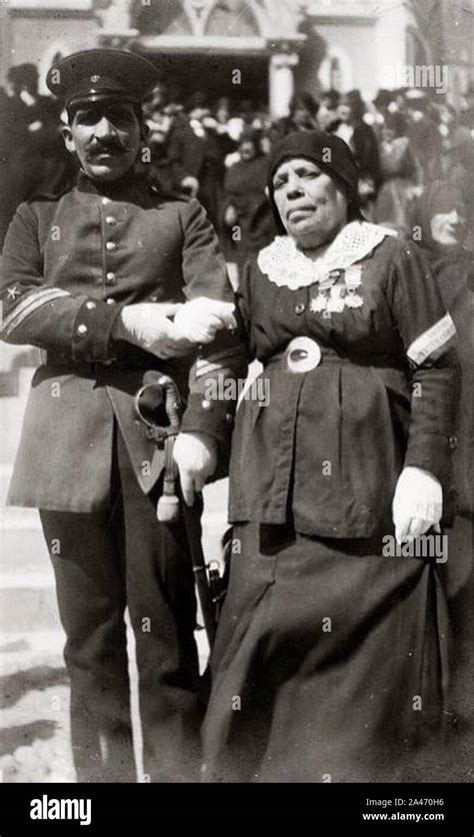
0 notes
Text
Purée je déteste mon brain de me réveiller à 4h du mat pour pointer du doigt ce que j'aurai dû dire de plus ou de différent pour avoir le poste de cantinière GRRRRR
JUST LET IT BE, c'est que ça devait pas se faire point
0 notes
Text
From England to Australia, my Vivandière* figure and bust has arrived, ready for the Small Subjects historex group build....
*Vivandière or cantinière is a French name for women who are attached to military regiments as sutlers or canteen keepers. Their actual historic functions of selling wine to the troops and working in canteens led to the adoption of the name 'cantinière' which came to supplant the original 'vivandière' starting in 1793.
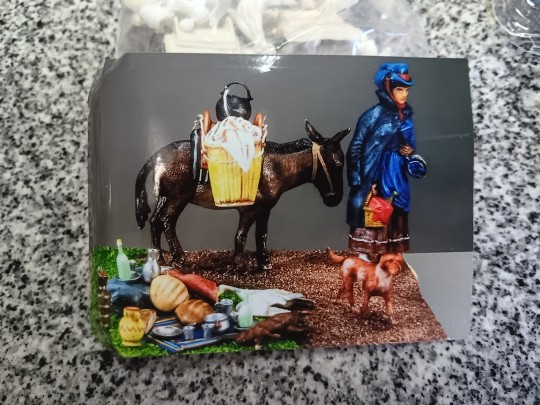
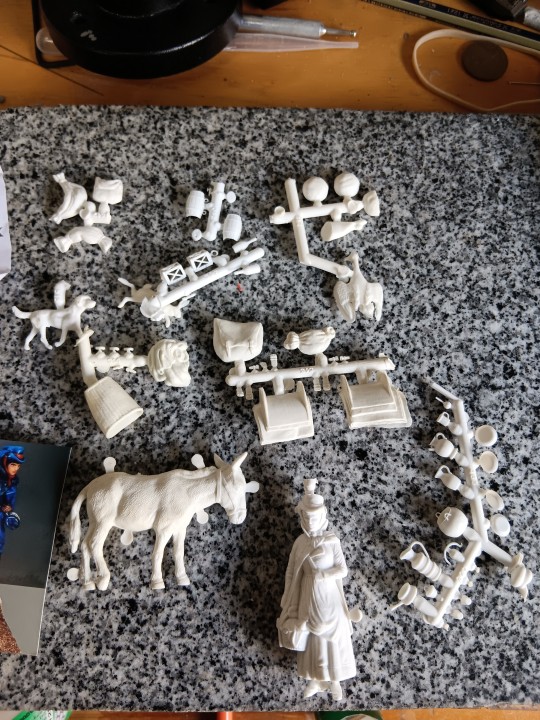



0 notes
Photo
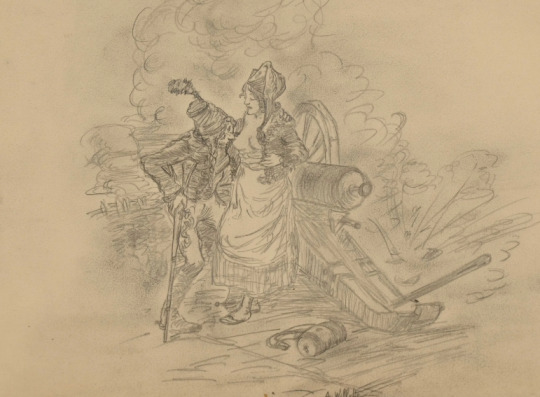
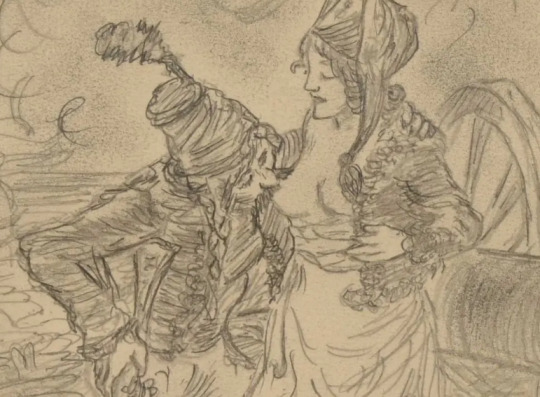
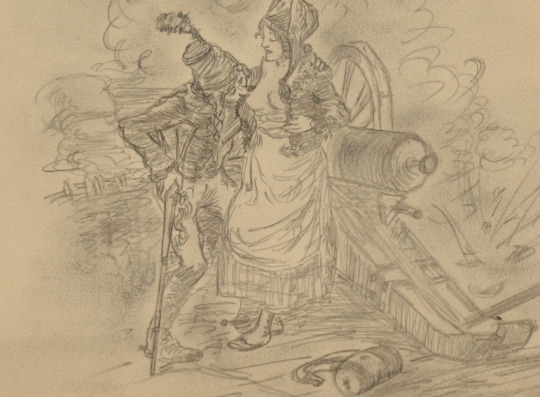
Забавненько! Adolphe WILLETTE (1857-1926), "Cantinière allaitant un hussard", mine de plomb sur papier signée en bas au centre
https://www.auction.fr/_fr/lot/adolphe-willette-1857-1926-quot-cantiniere-allaitant-un-hussard-quot-mine-de-plomb-sur-19599619
0 notes
Text
Annette Drevon: cantinière, soldier

"In 1880, visitors to the markets of Les Halles in Paris might have noticed an especially striking woman sitting at her vegetable stall. In her mid-fifties, with black hair and unwrinkled skin, she had an expression of ‘courage and energy’, which was perhaps unsurprising, given her past. Annette Drevon was a cantinière in the French army, a woman officially deputised to sell food and drink to the soldiers. At the Battle of Magenta in 1859, Annette was attached to the second regiment of Zouaves. During the battle two Austrian soldiers seized the regimental flag. Annette got it back: she killed the first soldier with a sabre and the second with two shots from her revolver. The regiment’s colonel pinned his own Cross of the Legion of Honour to her chest in honour of her actions.
Annette was still serving during the Franco-Prussian War of 1870, where she shot another soldier, this time a German who either insulted her or attempted to steal her Cross; she was sentenced to death but pardoned by Prince Frederick Charles of Hesse, and returned to France. She later received a small pension from Marshal MacMahon, who had commanded the who had commanded the French troops at Magenta, which she used to set up her vegetable stall.
Annette Drevon’s story is a useful reminder that for well over 400 years the normal battlefield was full of ordinary women, who were not only essential to the conduct of war but also demonstrated bravery, physical strength and the ability to stand up to tough conditions – all the things military leaders of the late twentieth century fretted that women could not do."
Forgotten warriors: The long history of women in combat, Sarah Percy
#annette drevon#history#women in history#women's history#france#french history#warrior women#women warriors#historical#historical figure#herstory#19th century#second french empire
71 notes
·
View notes
Photo
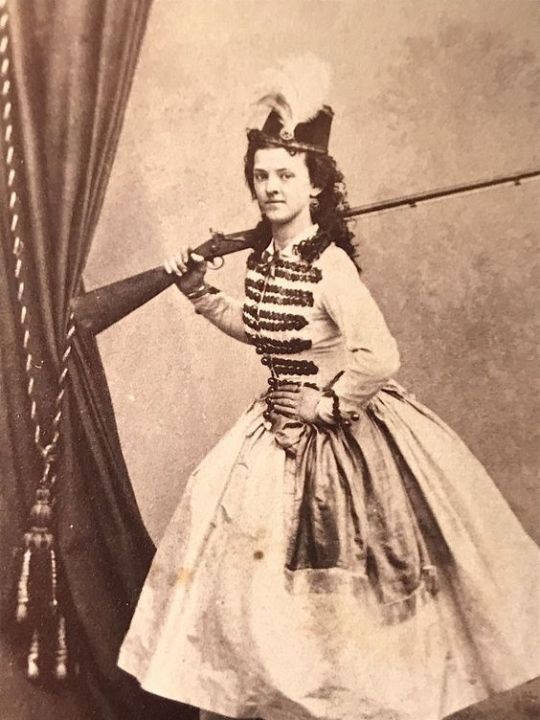
One badass image of a vivandiere. Via.
70 notes
·
View notes
Photo

Portrait of Madame Bru, a French cantinière (vivandière or sutler) in the Seventh Hussar Regiment, 1837, probably by Horace Vernet. Her uniform pairs the dark green of her regiment, including the skirt then considered necessary for decency, with a soldier’s traditional madder-red trousers (pantalon garance). The wide-brimmed hat is in a style typical to her profession, as is the tonnelet, which contained the eau-de-vie (brandy) she dispensed. Collections of the Musée de l'Armée
#france#1830s#19th century fashion#july monarchy#military#19th century art#algeria#cantinière#women at work and play#maghreb
2 notes
·
View notes
Text
Repas scolaires : Des cantinières à l’école de la transformation des produits locaux
Repas scolaires : Des cantinières à l’école de la transformation des produits locaux
Plus de deux cents cantinières et des directeurs d’école ont pris part, du 20 février au 12 mars 2022, à Loumbila (Plateau central), à une série de formations sur la transformation des produits locaux et l’hygiène alimentaire dans les cantines scolaires.
Bientôt, des élèves auront des mets faits à base de produits « sains » dans leurs assiettes. Des cantinières et responsables de 70 écoles…

View On WordPress
0 notes
Photo

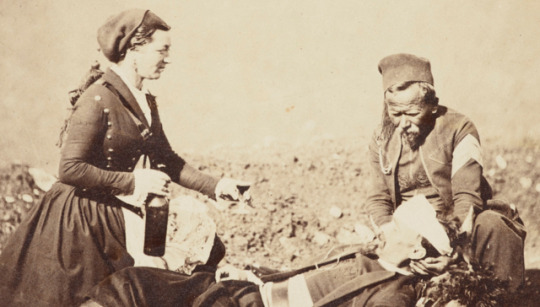


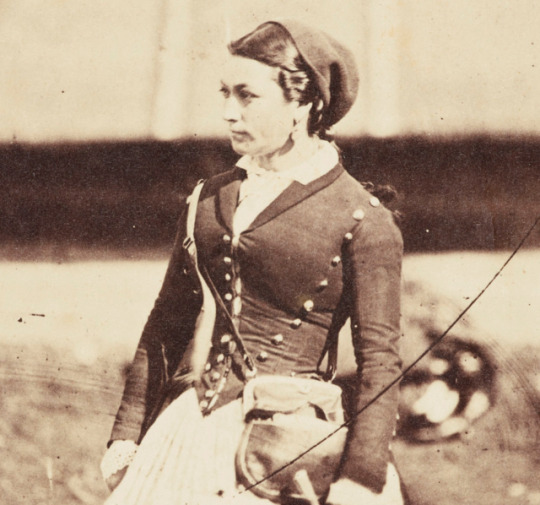
A Vivandière attends to a soldier of the Zouave regiment during the Crimean War, 5 May 1855.
Vivandières, also known as a Cantinières, were women who travelled with the French army as canteen workers. They often wore a female version of the uniform of the regiment they were attached to. Zouave regiments from Algeria served with the French army during the Crimean War.
316 notes
·
View notes